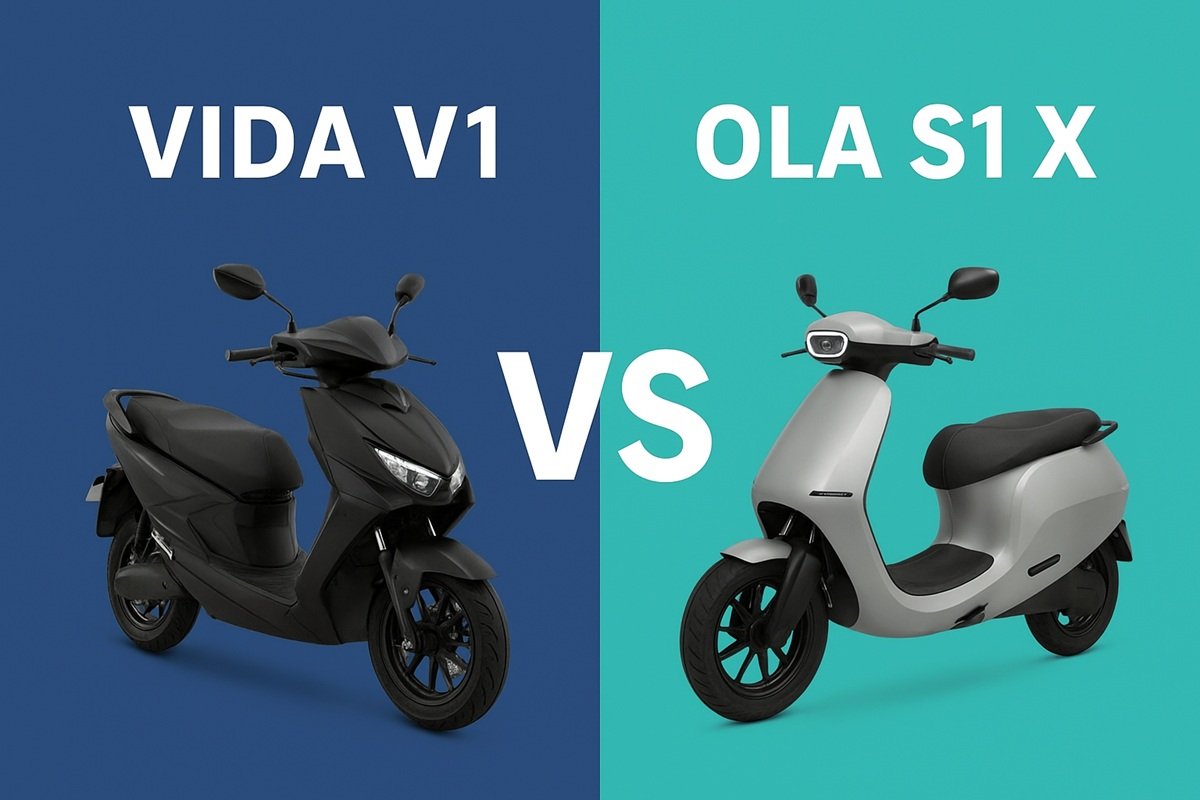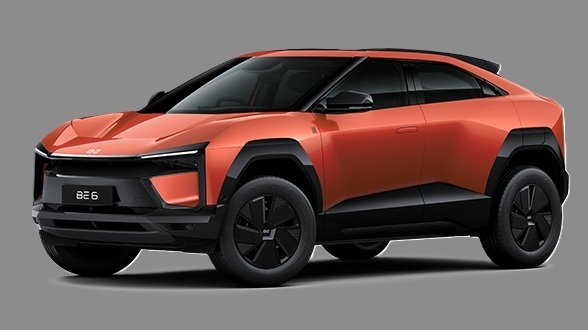
Vida V1 vs Ola S1 X Which Electric Scooter is Better for Indian Buyers?
Vida V1 vs Ola S1 X A Battle of Electric Scooters in India.
Vida V1 vs Ola S1 X : The Indian electric scooter segment has become one of the most dynamic and competitive markets in recent years. With increasing awareness about sustainability, rising fuel costs, and government incentives, electric mobility is no longer a futuristic dream—it’s a practical reality. Two brands making waves in this space are Vida by Hero MotoCorp and Ola Electric. Hero MotoCorp, the world’s largest two-wheeler manufacturer, has entered the EV domain with the Vida V1 (Plus and Pro variants), while Ola has expanded its portfolio with the S1 series, including the budget-friendly Ola S1 X.
Both scooters aim to capture the imagination of Indian buyers but approach the market with different philosophies. Here’s a detailed comparison between Vida V1 and Ola S1 X to understand which scooter might suit different types of riders.
Design and Styling
When it comes to design, both scooters adopt a modern and futuristic approach but with distinctive characteristics.
-
Vida V1: The V1 has a sharp and angular look with bold cuts and unique body lines. The split headlamp design and compact proportions give it an aggressive stance. The scooter has a strong urban personality, designed to attract young riders who value style along with practicality.
-
Ola S1 X: The S1 X follows Ola’s minimalist and sleek design philosophy. It features clean lines, a single-piece body panel, and a slim headlamp unit. Its styling is smoother compared to the Vida V1, giving it a more futuristic and premium appeal. The S1 X also has a slightly larger stance, which makes it look more substantial on the road.
Verdict: The Vida V1 appeals to those who like a bold, edgy design, while the Ola S1 X is perfect for buyers who prefer minimalism and sophistication.
Performance and Power
Performance is a key parameter for EV buyers, and both brands bring their own flavor.
-
Vida V1: The scooter is powered by a 3.94 kWh battery (Pro variant) with a claimed IDC (Indian Driving Cycle) range of up to 165 km. It can accelerate from 0 to 40 km/h in 3.2 seconds. With a top speed of 80 km/h, it offers a good balance between practicality and excitement. One unique advantage is its removable battery packs, which make charging more flexible for users who don’t have dedicated home charging setups.
-
Ola S1 X: The S1 X is positioned as a budget-friendly model but still packs decent performance. Depending on the variant (2 kWh, 3 kWh, or 4 kWh battery), the claimed range varies from 91 km to 151 km. Top speed ranges between 85–90 km/h, with acceleration figures also impressive for its price. However, unlike the Vida V1, the S1 X does not offer removable batteries, so charging requires a fixed-point setup.
Verdict: The Vida V1 Pro has a slight edge in terms of acceleration and battery-swapping convenience, while the Ola S1 X offers flexibility in multiple range variants, making it suitable for different budgets.
Charging and Battery Technology
Charging speed and convenience are crucial for EV adoption.
-
Vida V1: Hero MotoCorp offers fast charging support that can recharge the scooter to 80% in under 65 minutes. The removable twin battery system is a standout feature, as it allows users to charge the batteries indoors using a standard plug point—ideal for apartment dwellers.
-
Ola S1 X: Ola provides its growing Hypercharger network, which enables rapid charging. However, the S1 X itself does not support the fastest charging rates seen on premium Ola models. The battery is fixed, so portability is not an option.
Verdict: Vida V1 wins for flexibility and battery-swapping practicality, though Ola’s expanding Hypercharger ecosystem is an advantage for those living near charging hubs.
Features and Technology
Both scooters come loaded with smart features, though their focus differs.
-
Vida V1: It gets a 7-inch TFT touchscreen with customizable ride modes, cruise control, two-way throttle (for reversing), and over-the-air (OTA) updates. The scooter also includes turn-by-turn navigation, trip analytics, and geo-fencing. Hero has designed the interface to be intuitive and rider-friendly.
-
Ola S1 X: The S1 X is positioned as a cost-conscious model, so it doesn’t get the full-fledged touchscreen found on the S1 Pro. Instead, it comes with a basic digital display and limited smart features. Still, it retains key functionalities like multiple riding modes (Eco, Normal, Sport), remote diagnostics, and some connected features depending on the variant.
Verdict: The Vida V1 is clearly ahead in terms of advanced tech, while the S1 X offers the basics to keep costs competitive.
Comfort and Practicality
For daily commuters, comfort and storage are equally important.
-
Vida V1: The scooter has a slightly taller stance with a flat and spacious floorboard. It offers ample under-seat storage (26 liters), enough for a helmet or daily essentials. Suspension is tuned for comfort, and the scooter’s weight distribution feels stable at higher speeds.
-
Ola S1 X: Ola has optimized the S1 X for practicality with a large under-seat storage space (34 liters), one of the best in the segment. The floorboard is wide, allowing more legroom, and the seat is comfortable for two adults.
Verdict: The Ola S1 X offers better storage, while the Vida V1 balances comfort with stability and a sportier feel.
Safety and Build Quality
Vida V1 vs Ola S1 X :
-
Vida V1: Built by Hero, the V1 benefits from the brand’s strong reputation for durability. It gets disc brakes at both ends, CBS, and a robust chassis that inspires confidence.
-
Ola S1 X: Ola equips the S1 X with drum brakes at the rear and disc at the front (depending on variant). While it is lighter, some users have raised questions about Ola scooters’ long-term durability, though improvements are evident in the latest models.
Verdict: The Vida V1 inspires more confidence with Hero’s proven reliability, but the S1 X is steadily improving.
Pricing and Value Vida V1 vs Ola S1 X
Vida V1 vs Ola S1 X :
-
Vida V1: Positioned as a premium EV, its pricing is higher than Ola’s entry-level models. However, Hero justifies the cost with advanced features, removable batteries, and premium build quality.
-
Ola S1 X: The S1 X is all about affordability, with its starting price significantly lower. It caters to a wider audience, making EVs more accessible without compromising too much on performance.
Verdict: The Ola S1 X is the value-for-money champion, while the Vida V1 appeals to those willing to pay extra for advanced features.
Final Thoughts Vida V1 vs Ola S1 X
The Vida V1 vs Ola S1 X represent two different philosophies in India’s electric scooter market. The Vida V1 is aimed at buyers who want advanced technology, removable batteries, and premium reliability—perfect for urban professionals who value convenience and are willing to invest more. On the other hand, the Ola S1 X is designed for budget-conscious riders who want to experience electric mobility without stretching their finances, making it ideal for college students, first-time EV buyers, and daily commuters.
Ultimately, the choice depends on the rider’s priorities: convenience and features (Vida V1) vs affordability and storage (Ola S1 X). What’s certain is that both scooters are accelerating India’s transition towards clean and efficient mobility, offering options for every type of buyer.
Last Updated On 1 September 2025.
See also this: Honda Activa e VS Honda QC1 Which Scooter Suits You Best? .





